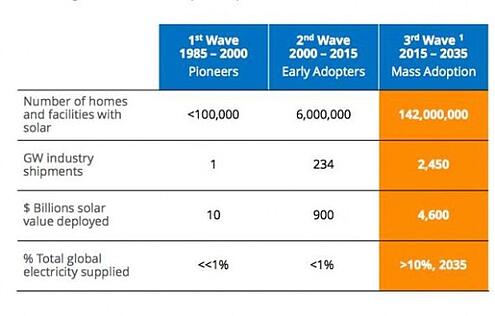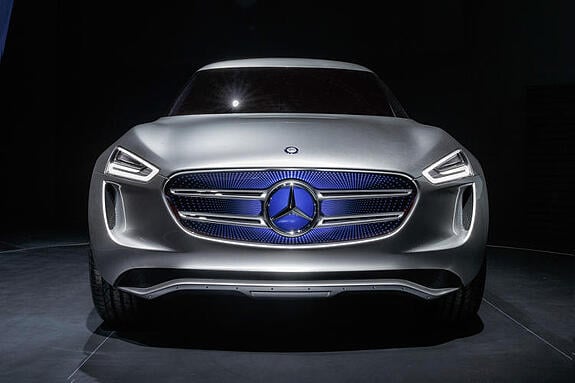
Wind power had a particularly good week, with announcements of three major advanced energy deals – investments from Google and IKEA, and a big acquisition by SunEdison.
On Wednesday, IKEA announced that it would be making its largest wind investment to date with the purchase of a wind farm in Cameron County, Texas. The 165 MW facility is the company’s second U.S. wind farm—the first is a 98 MW facility in Illinois, which the company purchased earlier this year. The Cameron project is expected to be operational in late 2015. This purchase deepens IKEA’s commitment to American advanced energy. According to Rob Olson, acting president of IKEA U.S., the company produces more kilowatt-hours than it consumes through existing solar and wind projects.
“From a U.S. perspective, we are in a good spot,” Olson told Forbes. “We have already surpassed our usage today, but what we are able to do is to benefit the total IKEA company. The U.S. has very favorable locations […] we can go deeper here than some other locations.”
Also on Wednesday, Google announced that it would be powering its new Dutch data center through wind energy. The U.S. company signed a 10-year power purchase agreement with Eneco to provide the complete output of a new wind farm near the center.
On Thursday, SunEdison announced that it would acquire First Wind for $2.4 billion. First Wind is one of the largest developers of wind farms in the U.S., and the company has a stake in solar energy as well (it’s the 11th largest utility-scale solar PV developer in the U.S., according to GTM research). As Ahmad Chatila, SunEdison’s president and chief executive, said, “[E]lectrons are electrons — solar or wind really doesn’t matter for our customers. Our customers are demanding that we have a more comprehensive solution.” For more on this deal, check out Eric Wesoff’s article in Greentech Media, “5 Slides that Show Why SunEdison Bought First Wind.”
For its part, solar powerhouse and AEE member company SunPower announced this week that it expects the solar industry to grow to $5 trillion within the next 20 years. Cleantechnica points out that the projection is “more or less consistent with the predictions of prominent investment banks” like Deutsche Bank's last month. Tom Werner, head of SunPower, broke down the history of solar development into three eras: the first wave of solar pioneers (1985-2000), then came a second wave of early adopters (2000-2015), and now (2015-2035) we are approaching the “third wave” of solar development – “mass adoption.” Now that sounds like a business opportunity.

This trajectory certainly makes sense in light of another article published this week: “It Was $40 Billion Cheaper to Install Solar in 2013 than in 2012.” Stephen Lacey, writing for Greentech Media, noted that the amount of money invested globally in technologies to curb carbon emissions dropped by $28 billion – not because less was being bought, but because what was being bought was so much cheaper, especially solar.
“The overall decrease is mainly due to the falling cost of some renewable energy technologies, particularly solar PV,” wrote the authors of a new report from the Climate Policy Initiative, cited by Lacey. “These cost savings mean that, in some cases, more renewable energy is actually being deployed for less investment. In 2013, it cost USD $40 billion less to achieve the same level of solar deployment as in the previous year.”
Could solar one day be incorporated into the sheen of our cars? The Mercedes G-Code, a concept car, has a “multi-voltaic silver” paint job, meaning that it incorporates solar energy into the energy it burns…or something. The car can apparently also capture energy from static electricity produced when wind meets the surface of the vehicle. Mercedes says that can be used to produce “on-board hydrogen or methane.”

Image courtesy of Mercedes.
“The technical visions in the G-Code clearly incorporate quite fantastical aspects and by no means raise the claim of wanting to pave the way for specific future technologies to enter into mass production,” says spokesperson Stefan Schuster. “But the G-Code describes ways that our grandchildren might one day consider the state of the art.”
“Fantastical,” maybe, but sign us up.
It’s certainly sounds better than the other advanced vehicle that debuted this week, Britain’s “poo bus,” which runs on bio-methane gas produced from sewage and food waste. The poo bus is in operation now, and it can drive 40 people up to 190 miles on a single tank of – you know. Whatever makes the wheels on the bus go round, I suppose!